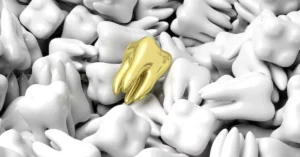At their core, 12 Days of Christmas ornaments are more than decorations—they are storytelling devices, handcrafted heirlooms, and representations of one of the most iconic carols in Western holiday culture. Inspired by the classic song “The Twelve Days of Christmas,” these ornaments illustrate each of the twelve gifts described in the verses, from a partridge in a pear tree to twelve drummers drumming.
In this article, we take a closer look at the origin of the tradition, artistic interpretations across generations, and how these ornaments are used to build collections, share stories, and celebrate the holiday season.
The Song Behind the Ornaments
“The Twelve Days of Christmas” originated as a cumulative carol, with roots possibly tracing back to 18th-century England or France. Each verse introduces a new gift, layered on top of the previous day’s gifts, until the twelfth day reveals an elaborate total of 364 gifts.
The lyrics are:
- A partridge in a pear tree
- Two turtle doves
- Three French hens
- Four calling birds
- Five golden rings
- Six geese a-laying
- Seven swans a-swimming
- Eight maids a-milking
- Nine ladies dancing
- Ten lords a-leaping
- Eleven pipers piping
- Twelve drummers drumming
The layered rhythm and imagery have made it ripe for artistic adaptation, particularly in the realm of ornamentation.
Origins of 12 Days of Christmas Ornaments
The tradition of crafting ornaments around the carol began gaining popularity in the mid-20th century. Initially driven by ceramic artisans and woodworkers, the ornaments were used both to decorate trees and as keepsakes. Eventually, large companies such as Hallmark and Lenox created dedicated series based on the song.
Collectors were drawn to the serialized nature of the set, the opportunity to gift a new ornament each year, and the variety of materials used to represent each day’s theme.
Materials and Craft Styles
12 Days of Christmas ornaments are made in an astonishing variety of materials, styles, and finishes. These include:
- Porcelain or ceramic: For heirloom-quality sets with hand-painted detail
- Blown glass: Often hand-crafted and vibrantly colored
- Wooden carvings: Evoke a rustic, old-world charm
- Felt and fabric: Lightweight and ideal for child-safe trees
- Metal or pewter: Highly durable and suitable for minimalist trees
Each material offers a different mood and finish, allowing collectors to curate based on theme or aesthetic.
Symbolism Behind Each Day
There is more to these ornaments than their names. Each “gift” has its own symbolism, often tied to folklore, numerology, or spiritual significance:
- Partridge in a pear tree: Symbolizes peace and self-sacrifice
- Two turtle doves: Fidelity and love
- Three French hens: Faith, hope, and charity
- Four calling birds: The four gospels in Christian theology
- Five golden rings: The five books of Moses or wealth and beauty
- Six geese a-laying: Creation and fertility
- Seven swans a-swimming: Grace and transformation
- Eight maids a-milking: Humility and service
- Nine ladies dancing: Joy and celebration
- Ten lords a-leaping: Authority and strength
- Eleven pipers piping: Sharing news or spreading faith
- Twelve drummers drumming: Finality and completeness
Understanding these meanings adds depth to their use as decorations.
Displaying the Ornaments: 12 Days of Christmas Ornaments
Traditionally, collectors hang the ornaments sequentially—either over 12 days starting on Christmas Day or during the Advent season. However, there are various creative ways to display them:
Tree Presentation
- Hang all twelve on one tree, spaced by day or gift
- Use different branches for each day to create a timeline effect
Mantel or Shelf Display
- Display using miniature stands or hooks
- Combine with themed garland, pine cones, and candles
Wall Art or Mobile
- Frame each ornament in a shadow box
- Create a hanging mobile for a child’s room or classroom

Creating Your Own Set: 12 Days of Christmas Ornaments
Making your own 12 Days of Christmas ornaments can be a meaningful family project or artistic challenge. Common DIY approaches include:
- Clay and Polymer: Sculpted by hand and painted
- Embroidery: Felt and thread pieces for a folk-art style
- Papercraft: Origami or cardstock layered for texture
- Recycled Materials: Upcycling everyday items into creative forms
Homemade sets often carry more sentimental value, especially when made with children or gifted year by year.
The Collector’s Perspective
Many collectors view the 12 Days of Christmas ornament series as an annual event. Some companies release one ornament per year, making it a 12-year collection commitment. Others sell full sets in limited editions.
Notable collections include:
- Lenox Fine China series
- Hallmark Keepsake Ornaments
- Waterford Crystal Christmas Collections
Collectors often keep journals or tags with dates and origins, turning each ornament into a chapter of family history.
The Educational Value: 12 Days of Christmas Ornaments
Teachers and parents often use the 12 Days of Christmas theme as an educational tool:
- Counting and numeracy for young children
- Cultural history and symbolism for older students
- Language arts prompts: rewrite the verses or add your own “days”
- Art projects: each student creates one ornament representing a day
The carol becomes more than a song—it becomes a multidisciplinary learning experience.
Sustainability and Modern Takes
As interest in sustainable holidays grows, many crafters are reimagining the 12 Days of Christmas through a modern lens:
- Eco-materials: Bamboo, recycled glass, or organic cotton
- Cultural reinterpretations: Swapping traditional gifts for modern or localized symbols
- Gender-neutral themes: Moving away from rigid gendered roles in ornament characters
This evolution keeps the tradition alive and relevant for new generations.
Conclusion: 12 Days of Christmas Ornaments
The 12 Days of Christmas ornaments offer more than decorative charm—they are a vibrant tradition rooted in storytelling, faith, and celebration. From their musical origin to their symbolic meanings, from their variety of materials to their growing popularity among collectors and DIYers, these ornaments continue to connect generations.
Whether you collect them, craft them, or simply appreciate their beauty, they offer a unique opportunity to reflect on what we give and receive—not just during the holidays, but in life. In a season so often defined by speed and consumerism, the slow unveiling of these twelve symbolic gifts serves as a reminder of patience, purpose, and joy.
FAQs: 12 Days of Christmas Ornaments
1. When should I start displaying 12 Days of Christmas ornaments?
Traditionally, the 12 days begin on Christmas Day and end on January 5, but many display them throughout December.
2. Can I buy the full set or only one ornament at a time?
Both options exist. Some brands offer yearly releases, while others sell complete sets for convenience.
3. Are these ornaments religious in nature?
While some interpretations tie the gifts to Christian symbolism, many collections focus on secular artistic beauty.
4. How can I store my 12 Days ornaments safely?
Use individual padded boxes or compartments, especially for ceramic or glass pieces. Label each one by day.
5. Is it possible to customize or personalize these ornaments?
Yes. Many artisans and online retailers offer engraved, hand-painted, or name-tagged versions for personal gifting.
For more information, click here.









